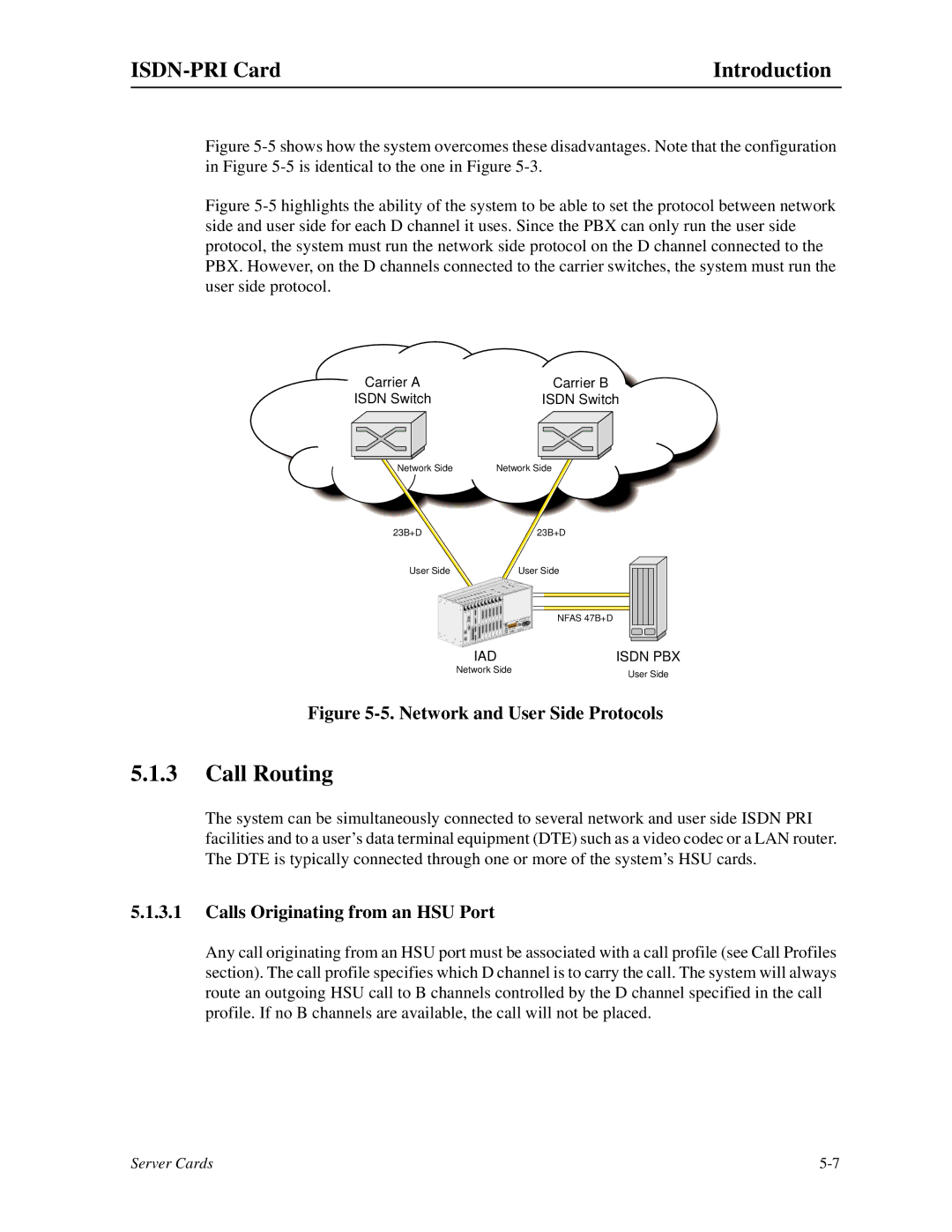
| Introduction |
Figure 5-5 shows how the system overcomes these disadvantages. Note that the configuration in Figure 5-5 is identical to the one in Figure 5-3.
Figure 5-5 highlights the ability of the system to be able to set the protocol between network side and user side for each D channel it uses. Since the PBX can only run the user side protocol, the system must run the network side protocol on the D channel connected to the PBX. However, on the D channels connected to the carrier switches, the system must run the user side protocol.
Carrier A |
| Carrier B |
ISDN Switch |
| ISDN Switch |
Network Side | Network Side | |
23B+D |
| 23B+D |
User Side |
| User Side |
|
| NFAS 47B+D |
| IAD | ISDN PBX |
| Network Side | User Side |
|
| |
Figure 5-5. Network and User Side Protocols
5.1.3Call Routing
The system can be simultaneously connected to several network and user side ISDN PRI facilities and to a user’s data terminal equipment (DTE) such as a video codec or a LAN router. The DTE is typically connected through one or more of the system’s HSU cards.
5.1.3.1Calls Originating from an HSU Port
Any call originating from an HSU port must be associated with a call profile (see Call Profiles section). The call profile specifies which D channel is to carry the call. The system will always route an outgoing HSU call to B channels controlled by the D channel specified in the call profile. If no B channels are available, the call will not be placed.
Server Cards |
